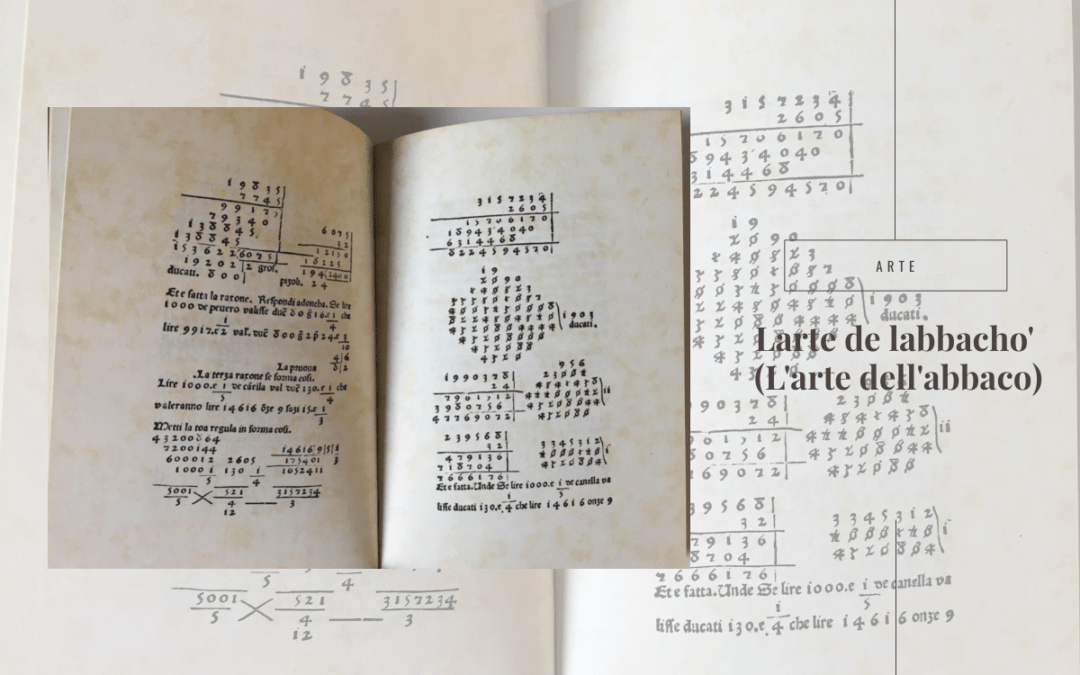Treviso and the world’s oldest mathematics book
Travelers, tourists and the inquisitive who love to discover the world’s hidden secrets will be amazed at the mystery that wanders around Treviso.
This wonderful city is the keeper of a text of prestigious importance: Larte
de labbacho’ (L’Arte dell’abbaco).
It is the oldest mathematics book in the world and the city of Treviso has been taking care of it since the day it was published in Treviso at the end of 1478.
Would you like to learn about the history that has followed Treviso for centuries? So, read on!
The secret of Treviso: custodian of wisdom
Larte de labbacho’ (L’Arte dell’abbaco), known to all as the Treviso Arithmetic, is the first arithmetic manual in the world. It was published in Treviso in 1478. Only four years after its publication, in 1482, the first printed edition of Euclid’s Elements was published in Venice.
The main difference between the two scientific texts is that the Euclidean manual focuses on learning geometry, while the Treviso Arithmetic focuses on arithmetic.
The arithmetic manual was mainly distributed among the merchants of Treviso, and it was for them that it was written in the Venetian vernacular, so that everyone could understand and learn arithmetic as well as possible.
Therefore, one of the world’s first scientific texts was created for the self-study of tradesmen who needed to learn arithmetic for their daily work.
The Treviso author hidden in the shadows
The manual consists of 123 unnumbered pages on 62 sheets, dedicated to: “to everyone who wants to use the art of commerce commonly called larte de la labbacho”.
The unknown author of the important scientific text initiated the distribution of mathematics among the middle class mainly through the use of the vernacular, and it was thanks to him that Treviso achieved an important scientific record.
The author’s only information relates to the day he finished the manual: 10 December 1478. Nevertheless, his name as well as his character is still hiding in the shadows today. With regards to the publisher, however, there are still plenty of doubts.
The Treviso Arithmetic: contents
The Arabic numbering system was used in the manual, rather than the Roman system. The symbols we use today for arithmetic operations (-,×, ÷,+) do not appear because they were discovered later. For the arithmetic manual, these terms were used:
♦ DE: to indicate subtraction operations.
♦ FIA: to indicate multiplication operations.
♦ IN: to indicate division operations.
♦ ET: to indicate addition operations.
In his arithmetic manual, the author not only offers readers a general explanation of the various operations that exist, but also explains their practical execution in detail.
In five acts, the author instructs the merchants on fundamental operations in arithmetic practice.
The author also uses the concept of a fraction, but not as we know it today with decimal digits because they too were only discovered later.
The last wonder left behind by the mysterious author is the teaching to calculate the date of the new moon.
The arithmetic manual was successful not only in Italy. A London bookseller bought one of the very rare copies of the manual in 1785 and from there it began its journey around the world. At the end of the 19th century, a copy of the manual was sold at auction by New York publisher George Arthur Plimpton, who donated it to Columbia University, which still has it preserved today.
Copies of the Treviso Arithmetic are extremely rare, and Treviso has full ownership of this work of immense historical and scientific value.
How to travel to Treviso to discover more of its history
You can reach Treviso using ATVO services. The transport company has dedicated services to and from Treviso but serves the entire eastern Veneto region, and the lines also include airport connections.
ATVO services are the best solution to avoid using a car, the stress it brings and to avoid excessive parking costs.
Here you can check all the available timetables for your preferred location and book your ticket.
Enjoy your journey!




